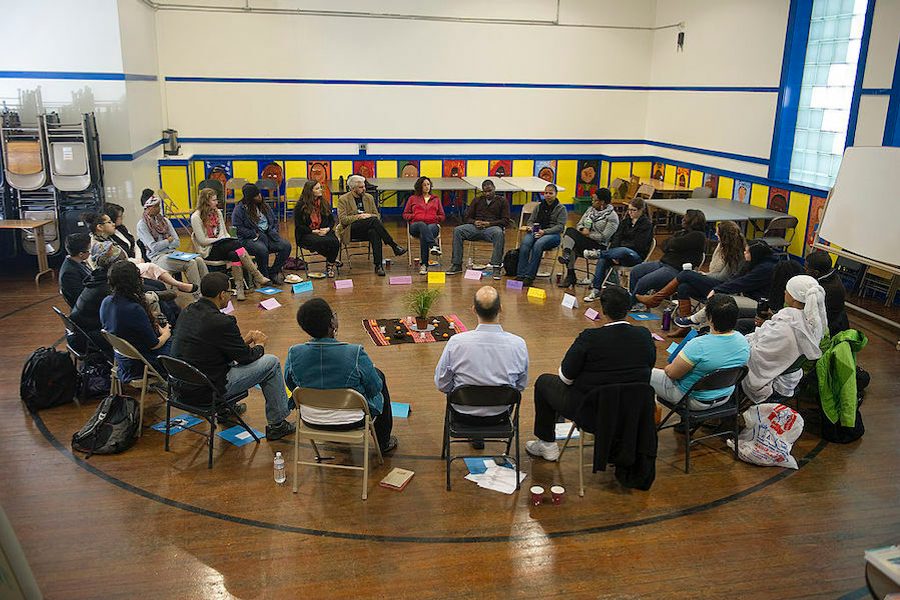Restorative Justice: A Much-Needed Alternative to Mass Incarceration
Courts and schools across the country are looking beyond punishment.
In These Times Editors

re•stor•a•tive jus•tice
noun
- A response to crime or rule-breaking that prioritizes repairing the harm done to victims and communities
“When will our consciences grow so tender that we will act to prevent human misery rather than avenge it?” —Eleanor Roosevelt
What does that actually look like?
Restorative justice programs are increasingly common within schools and nonprofits, and 35 states have adopted legislation encouraging the practice. Mental health and drug courts aim to connect offenders with the treatment they need. Diversion programs allow young people to avoid the conventional juvenile justice system and meet with those affected by a crime (which can include the broader community, family of a victim or, if they so choose, the victim themselves) for a process of learning, mediation and restitution. Outcomes are non-punitive, and can include some form of direct assistance to the victim as well as commitments from the offender to various forms of community engagement (including but not limited to conventional community service).
This sounds touchy-feely.
Maybe. But restorative justice is also an urgently needed alternative to locking people up. In the U.S., one out of every 38 people is under some form of correctional supervision, a costly system that exacerbates racial and economic inequality without actually stopping crime. In 2015, the school district of Jefferson Parish, La., made headlines when a Black eighth-grade student was arrested and handcuffed in front of his class after throwing some Skittles. The district committed to a new discipline code and restorative justice training for teachers and staff, and in one school, suspensions — which are statistically four times more likely to be given to Black students — are down 56%.
So does restorative justice work?
It’s looking good! There’s solid evidence that drug courts and alternative juvenile justice courts are more effective at reducing recidivism than traditional approaches. In a number of studies, victims of crimes prefer restorative justice over the traditional court process, which can trigger the trauma of the crime all over again. This method does not require victims to forgive anyone — and they often do not — but, unlike conventional trials, the process is designed to heal, address root causes and prevent offenses from happening again. Programs labeled as restorative justice aren’t always a step in the right direction. There are concerns that fee-based or privately operated programs may actually exacerbate inequities. Viewed as part of a larger movement against mass incarceration and for a more peaceful society, however, restorative justice is an important philosophy.
This is part of “The Big Idea,” a monthly series offering brief introductions to progressive theories, policies, tools and strategies that can help us envision a world beyond capitalism. For recent In These Times coverage of restorative justice in action, see, “To End Mass Incarceration, We Must Rethink How We Respond to Violence” and “Trial by Peace Circle: How a Chicago Community Is Pursuing Jail-Free Justice.”








